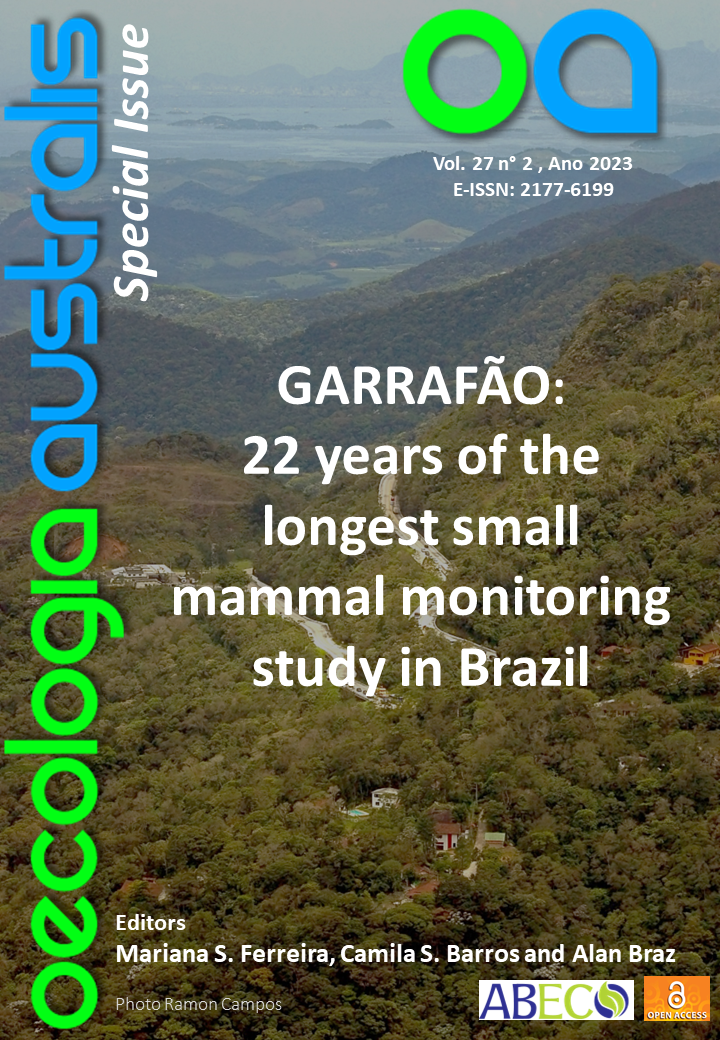POPULATION DYNAMICS OF THE CLIMBING MICE RHIPIDOMYS ITOAN (COSTA, 2011) IN THE BRAZILIAN ATLANTIC FOREST
DOI:
https://doi.org/10.4257/oeco.2023.2702.04Keywords:
El Niño, long-term studies, small mammals, time series, tropical forestAbstract
One of the fundamental questions in population ecology is what factors influence size and stability
of populations. Rodents are one of the best-studied mammalian species regarding population dynamics, but little knowledge about rodent dynamics in tropical environments is available, especially in tropical rainforests, where special adaptations in behavior and physiology may have evolved. Here, we used a detailed dataset from a long-term monitoring program to identify the feedback structure (density dependence) and determine the effect of local (rainfall and temperature) and large-scale (El Niño events) climate variables on population dynamics of the climbing mice Rhipidomys itoan in the Brazilian Atlantic Forest. Individuals were captured and marked (ear tags) from August 2000 to February 2016 and monitored every other month in three trapping grids in trapping sessions of five consecutive nights. Time series diagnostic tools were used to identify the feedback structure and linear models were used to evaluate the relationship between climate and population size. The population was dominated by a first-order negative feedback, possibly as a consequence of intraspecific competition for resources and/or the effect of a generalist predator. Mean maximum temperature with and without one-year time lag acted as the main exogenous factor negatively affecting the population dynamics of this Cricetidae rodent, mainly at low densities. These results have important ecological and conservation implications, since this is the first study elucidating R. itoan population dynamics, a new species classified as Data Deficient by the Chico Mendes Institute for the Biodiversity Conservation of Brazil.


